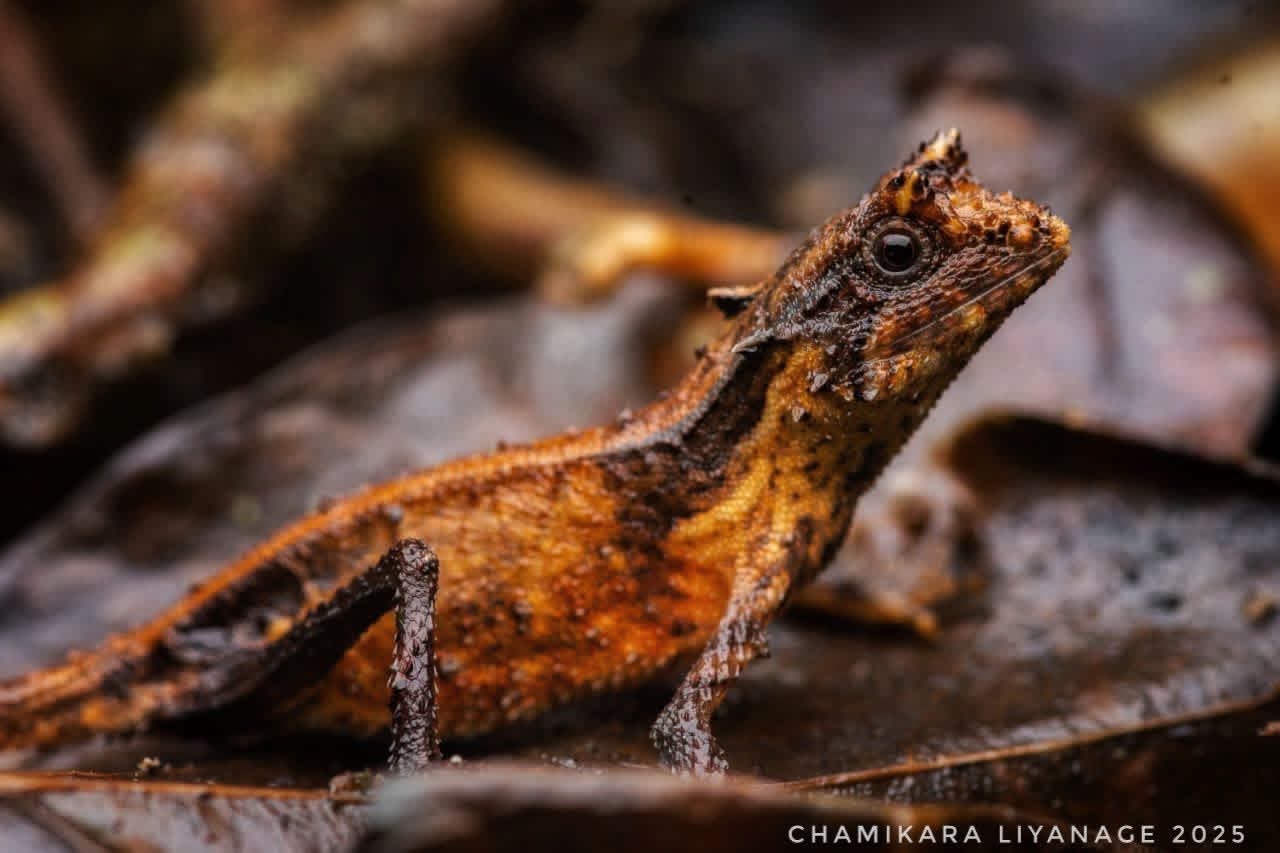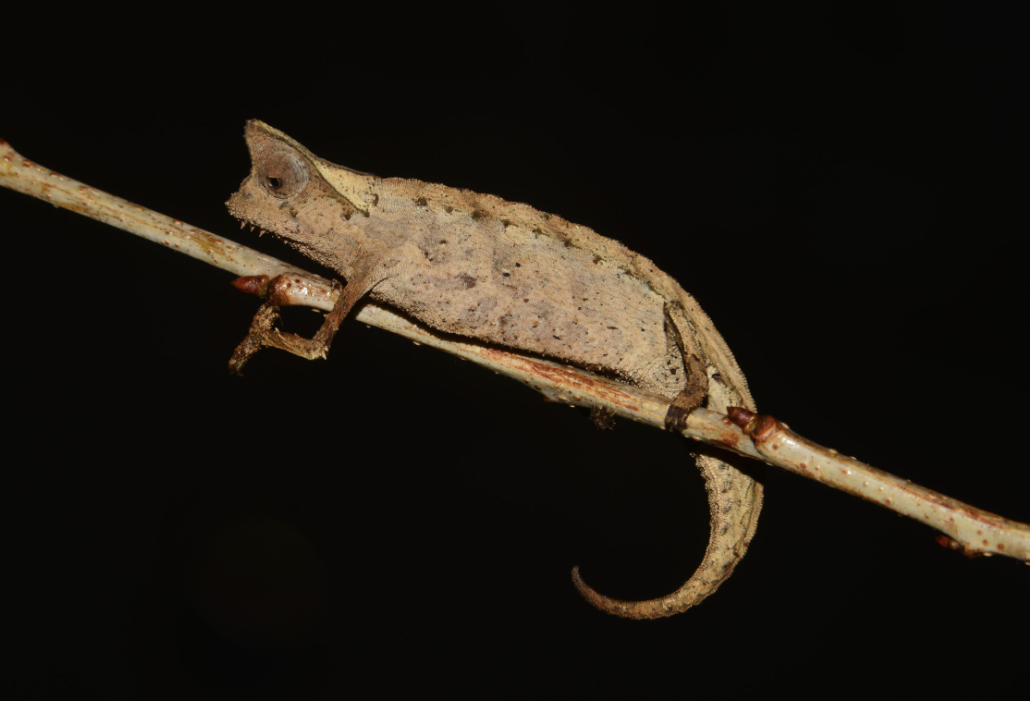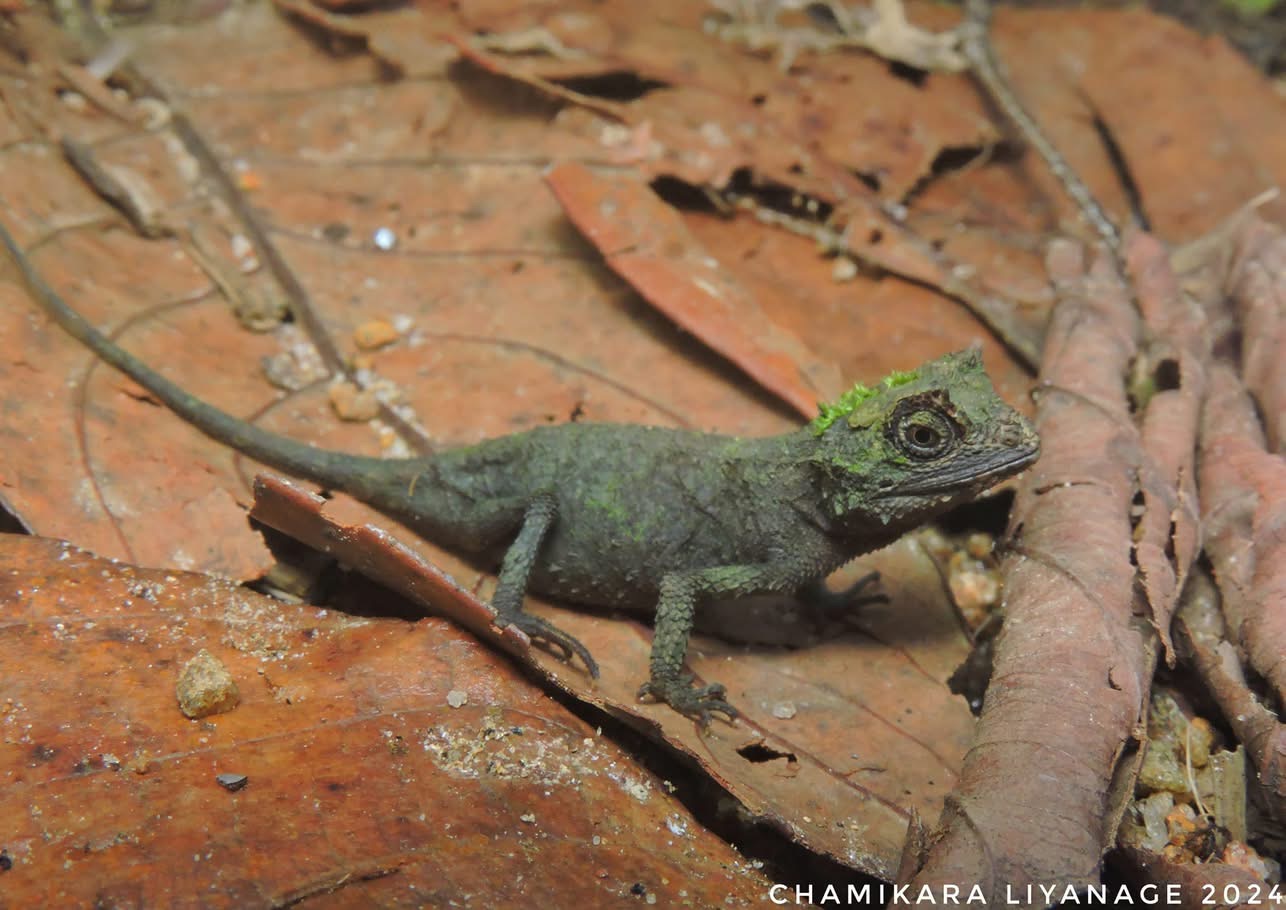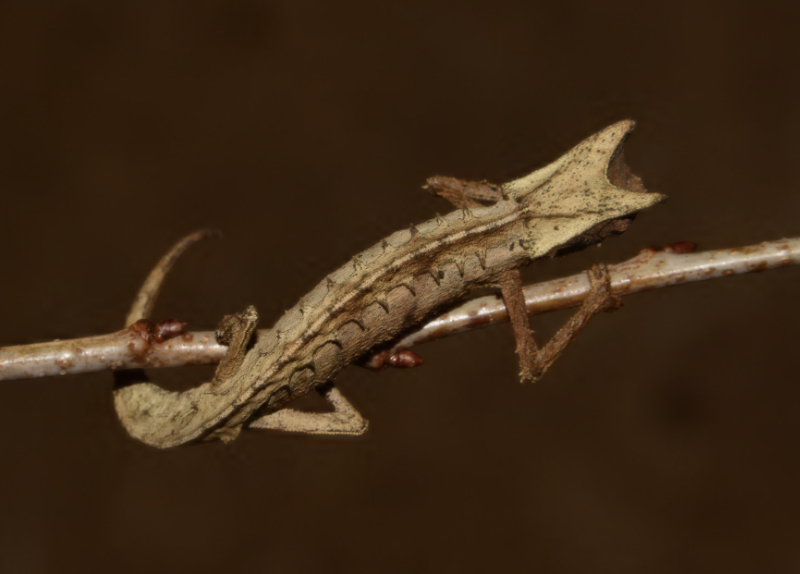Forest Phantoms: Morphological Convergence Between Ceratophora karu and Brookesia therezieni


Convergent evolution
is the independent acquisition of similar traits in unrelated lineages, driven by analogous ecological pressures. As Stayton (2015) emphasizes, convergence may be recognized either by pattern—similarity in form—or by process, where similar selective forces yield comparable adaptations despite phylogenetic distance. In the leaf‑litter microhabitats of Sri Lanka and Madagascar, Ceratophora karu and Brookesia therezieni exemplify this phenomenon with remarkable fidelity.
Ceratophora karu: The Karu's Horned Lizard

Described by Pethiyagoda and Manamendra‑Arachchi (1998), Ceratophora karu is a critically endangered agamid endemic to the Rakwana massif of southern Sri Lanka, specifically the Morningside Forest Reserve. It inhabits shaded montane rainforest between roughly 1,000–1,100 meters elevation, where leaf litter and dense undergrowth dominate (Pethiyagoda and Manamendra‑Arachchi 1998; Amarasinghe et al. 2021). Adults measure approximately 45–55 mm snout–vent length (SVL), with a modest rostral appendage compared to congeners. The body is laterally compressed, limbs are short and gracile, and coloration is cryptic—typically mottled brown and olive, blending seamlessly with detritus. The species is oviparous, with limited reproductive data due to its rarity and elusive behavior (Amarasinghe et al. 2021).
Brookesia therezieni: The Perinet Leaf Chameleon

First described by Brygoo and Domergue (1970), Brookesia therezieni is a leaf chameleon endemic to eastern Madagascar, particularly the Andasibe (Perinet) region. It occupies lowland and montane rainforest, favoring leaf litter and low vegetation strata. Adults reach approximately 35–45 mm SVL, placing it among the smaller Brookesia species. Its body is dorsoventrally flattened; limbs are short and weakly muscled; coloration is cryptic—brown to olive with subtle patterning that mimics decaying leaves. Like other chameleons, it is oviparous and insectivorous, using a ballistic tongue for prey capture (Brygoo and Domergue 1970; Tolley and Herrel 2013; Glaw and Vences 2007).
Morphological and Ecological Convergence
Despite their phylogenetic distance—Agamidae vs. Chamaeleonidae—C. karu and B. therezieni exhibit striking convergence in morphology, coloration, locomotion, and ecological niche.
Cryptic coloration and mimicry: Both species rely on earth‑toned camouflage to avoid predation. Brookesia enhances this with dermal granularity and leaf‑like posture (Glaw and Vences 2007; Tolley and Herrel 2013); Ceratophora uses mottled pigmentation and stillness (Pethiyagoda and Manamendra‑Arachchi 1998).
Miniaturization and limb reduction: Both species exhibit reduced limb length and small body size, facilitating stealth and maneuverability in cluttered substrates. This reflects biomechanical constraints and selective pressure for low‑profile movement (Tolley and Herrel 2013).
Locomotion and posture: Movement is slow and deliberate. Brookesia often freezes in leaf‑mimicking poses; Ceratophora adopts similar stillness, with its rostral appendage possibly aiding disruptive camouflage (Pethiyagoda and Manamendra‑Arachchi 1998; Tolley and Herrel 2013).
Feeding strategy: Both are sit‑and‑wait predators targeting small arthropods. Brookesia uses tongue projection; Ceratophora relies on rapid jaw strikes. Their cryptic behavior enhances ambush efficiency (Tolley and Herrel 2013).
Conclusion

The convergence between Ceratophora karu and Brookesia therezieni is a compelling example of evolutionary parallelism driven by shared ecological constraints. Their adaptations—cryptic coloration, miniaturization, slow locomotion, and ambush predation—are not superficial resemblances but deeply integrated responses to life in leaf‑litter microhabitats. This case underscores the predictive power of convergent evolution and the importance of preserving these fragile ecosystems to maintain such evolutionary marvels (Stayton 2015).
References
Amarasinghe, A. A. T., A. M. Bauer, D. R. Chandraratne, K. M. Espinoza, et al. 2021. "Ceratophora karu." The IUCN Red List of Threatened Species 2021: e.T197246A123312242.
Brygoo, É.‑R., and C. A. Domergue. 1970. "Notes sur les Brookesia de Madagascar. V. Description de deux espèces nouvelles: B. lambertoni n. sp. et B. therezieni n. sp. (Chamaeleonidae)." Bulletin du Muséum National d'Histoire Naturelle, Paris, 2e série.
Glaw, F., and M. Vences. 2007. A Field Guide to the Amphibians and Reptiles of Madagascar. 3rd ed. Cologne: Vences & Glaw Verlag.
Pethiyagoda, R., and K. Manamendra‑Arachchi. 1998. "A Revision of the Endemic Sri Lankan Agamid Lizard Genus Ceratophora Gray, 1835, with Description of Two New Species." Journal of South Asian Natural History 3(1):1–50.
Stayton, C. T. 2015. "The Definition, Recognition, and Interpretation of Convergent Evolution, and Two New Measures for Quantifying and Assessing the Significance of Convergence." Evolution 69(8):2140–2153.
Tolley, K. A., and A. Herrel, eds. 2013. The Biology of Chameleons. Berkeley: University of California Press.